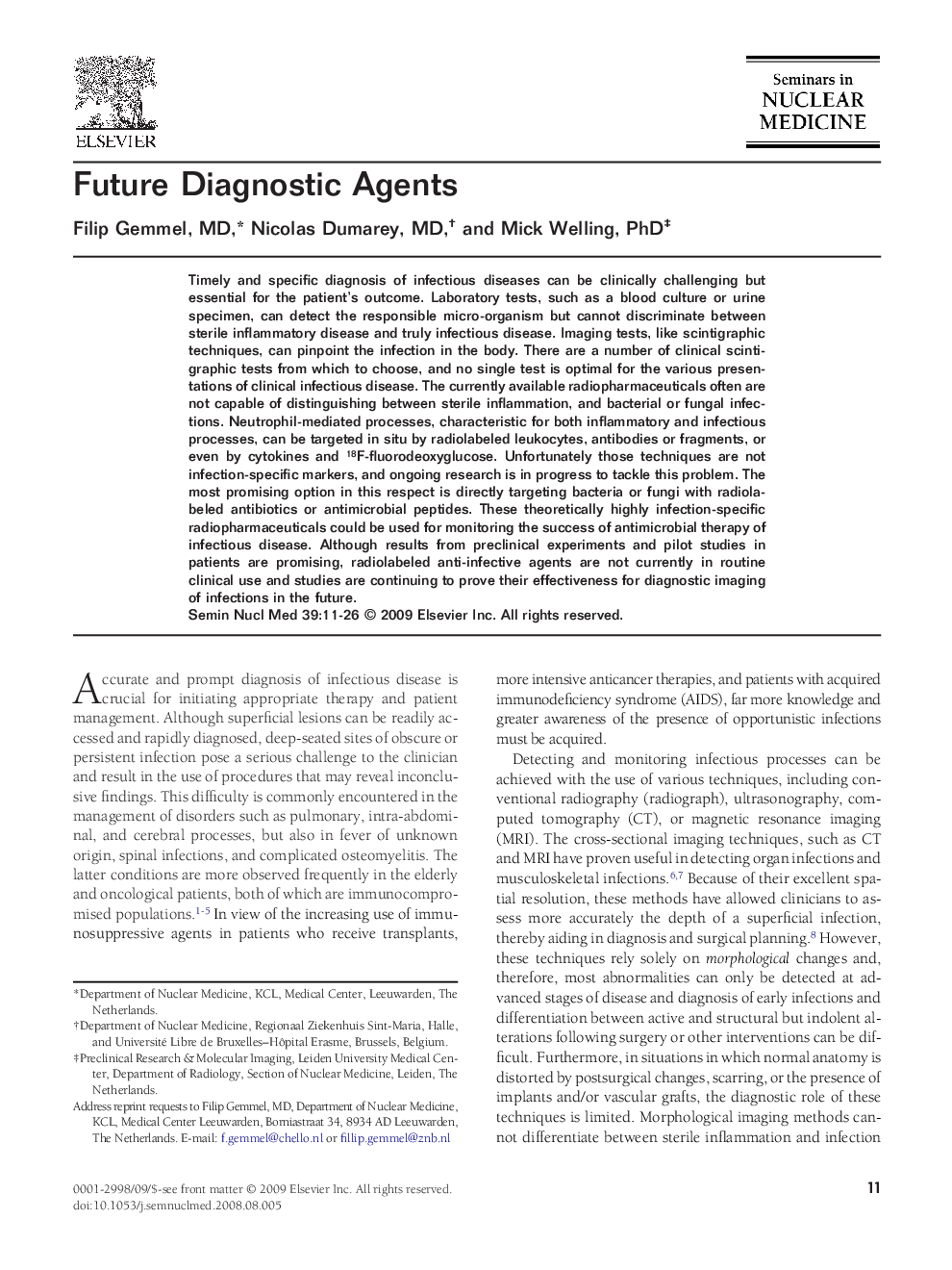| Article ID | Journal | Published Year | Pages | File Type |
|---|---|---|---|---|
| 4251398 | Seminars in Nuclear Medicine | 2009 | 16 Pages |
Timely and specific diagnosis of infectious diseases can be clinically challenging but essential for the patient's outcome. Laboratory tests, such as a blood culture or urine specimen, can detect the responsible micro-organism but cannot discriminate between sterile inflammatory disease and truly infectious disease. Imaging tests, like scintigraphic techniques, can pinpoint the infection in the body. There are a number of clinical scintigraphic tests from which to choose, and no single test is optimal for the various presentations of clinical infectious disease. The currently available radiopharmaceuticals often are not capable of distinguishing between sterile inflammation, and bacterial or fungal infections. Neutrophil-mediated processes, characteristic for both inflammatory and infectious processes, can be targeted in situ by radiolabeled leukocytes, antibodies or fragments, or even by cytokines and 18F-fluorodeoxyglucose. Unfortunately those techniques are not infection-specific markers, and ongoing research is in progress to tackle this problem. The most promising option in this respect is directly targeting bacteria or fungi with radiolabeled antibiotics or antimicrobial peptides. These theoretically highly infection-specific radiopharmaceuticals could be used for monitoring the success of antimicrobial therapy of infectious disease. Although results from preclinical experiments and pilot studies in patients are promising, radiolabeled anti-infective agents are not currently in routine clinical use and studies are continuing to prove their effectiveness for diagnostic imaging of infections in the future.
